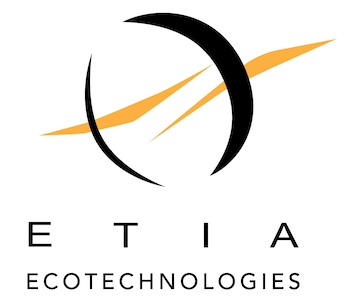Sludge drying
What is sludge drying?
Drying of sludge is the process of its volume reduction that allows reducing the moisture content to as little as 5 to 10%. It is a powerful measure to reduce the disposal costs of the sludge where other management routes are limited – sludge transportation distances are long and costly (sludge is heavy). It also avoids hygienic problems (disease transmission, odors). Drying of sludge can also be a measure of turning this product into value (for example drying by-products like apple pomace or spent grains to avoid them rotten). Moreover, it makes it possible to reuse as feed or food (flour, biscuits, noodle) cosmetics, or dietary supplement, where the dry material can be sold as a ready product (soil amendment or fertilizer) or used for further processing such as pyrolysis.
Hazardous sludges require management
Sewage sludges may be expected to contain, to some degree, all of the contaminants present in the raw waste. Many of these materials are toxic and/or hazardous. Those contaminants include arsenic, beryllium, cadmium, chromium, copper, lead, mercury, molybdenum, nickel, selenium, and zinc. After drying, heavy metals in the sludge are concentrated in the solid residue which makes them more manageable
Right process selection
Choosing the right solution for sludge drying requires considering all the technical and financial aspects of the project. Physico-chemical parameters of sludge should be checked (humidity, density, and viscosity), and the solution serving good capacity needs to be adjusted.
Typically, there are solutions for continuous process VS batch process of sludge drying, but for industry, it’s always better with an uninterrupted process because of their low OPEX.
Our solution
Kenki dryer is based on the unique design of self-cleaning twin screw conveyors (International Patents) that allows the drying pasty and sticky materials that no other company can deal with.
Solid waste is crushed and dried simultaneously inside the dryer. The quality of dried material is uniform and stable.
Kenki dryer has a very simple construction, and its initial cost is estimated to be profitable with the cost of industrial waste disposal for about 2 -3 years. Also, as the heat source of drying is only saturated steam, running costs can be kept low by using surplus steam within your facility. Machine operation is conducted in continuous mode easily, and there is no need for supplementary operators and labor. Since the quantity of replacement parts is small, maintenance is easy, and its costs are reduced.
Because of low-temperature drying, the composition of the dried material is not affected, and organic sludges after drying can become added value as fuel, fertilizer, and many more. Because the low-temperature drying does not use flames, the dryer is safe and hygienic. All the discharged water comes out from the exhaust air blower and can be returned to wastewater treatment facilities. Hazardous sludge becomes easy to handle.
This process has many advantages: higher loading rates, reduced fuel consumption, more stable operation, easier control, and reduced air emissions.
Examples:
https://metchem.com/sludge-dryer/
https://www.flottweg.com/applications/industrial-waste-mineral-oils/paint-sludge/
https://www.sciencedirect.com/science/article/pii/S0301479715304540
